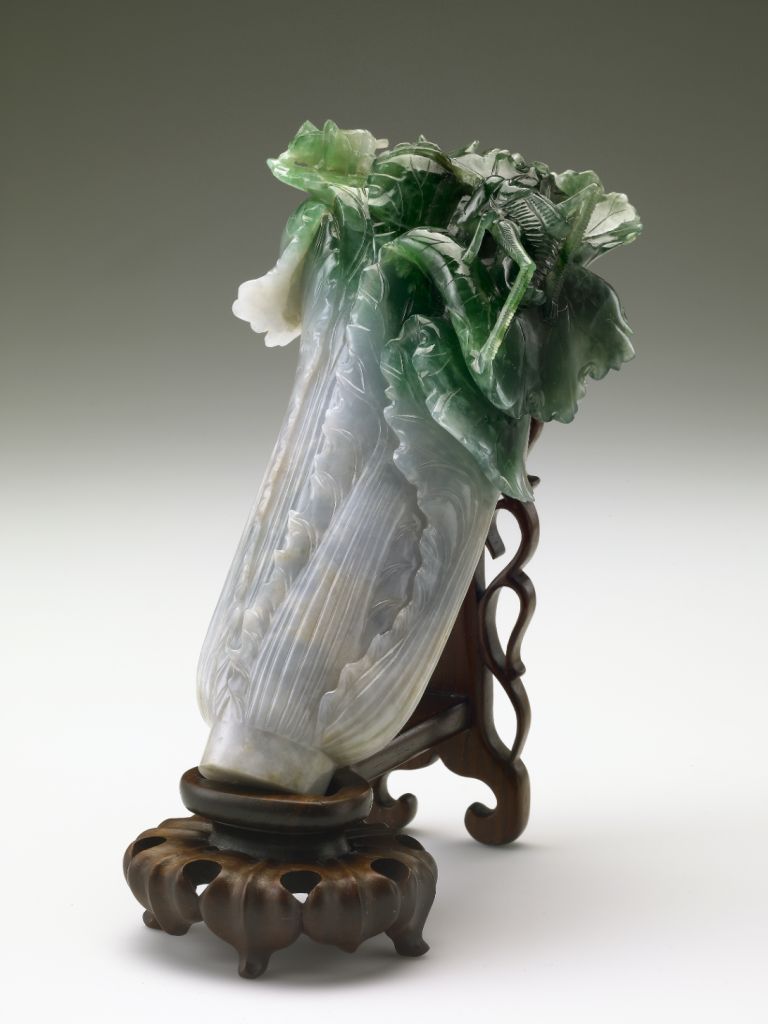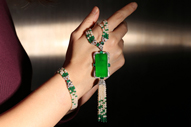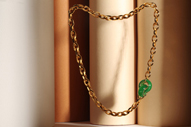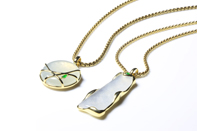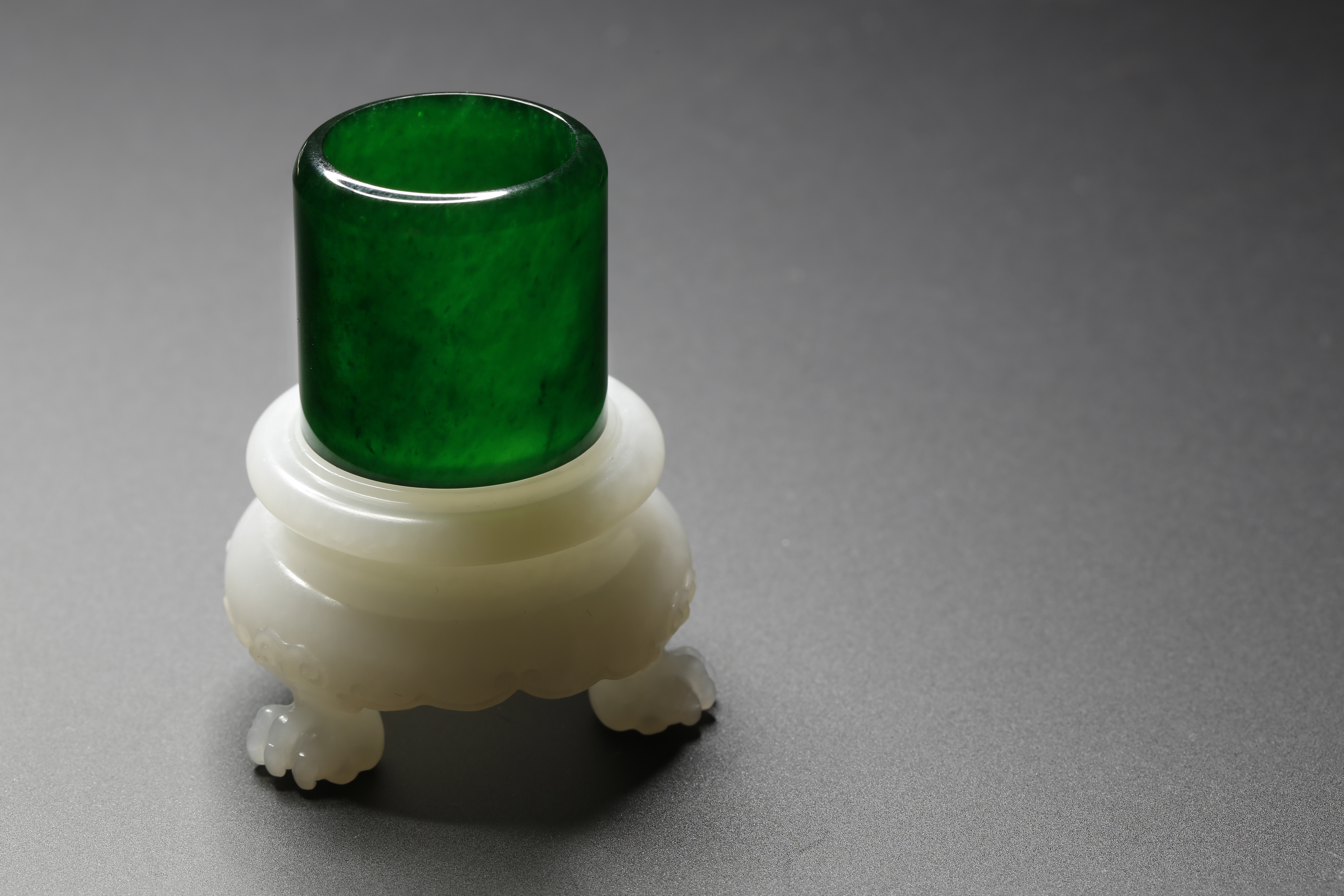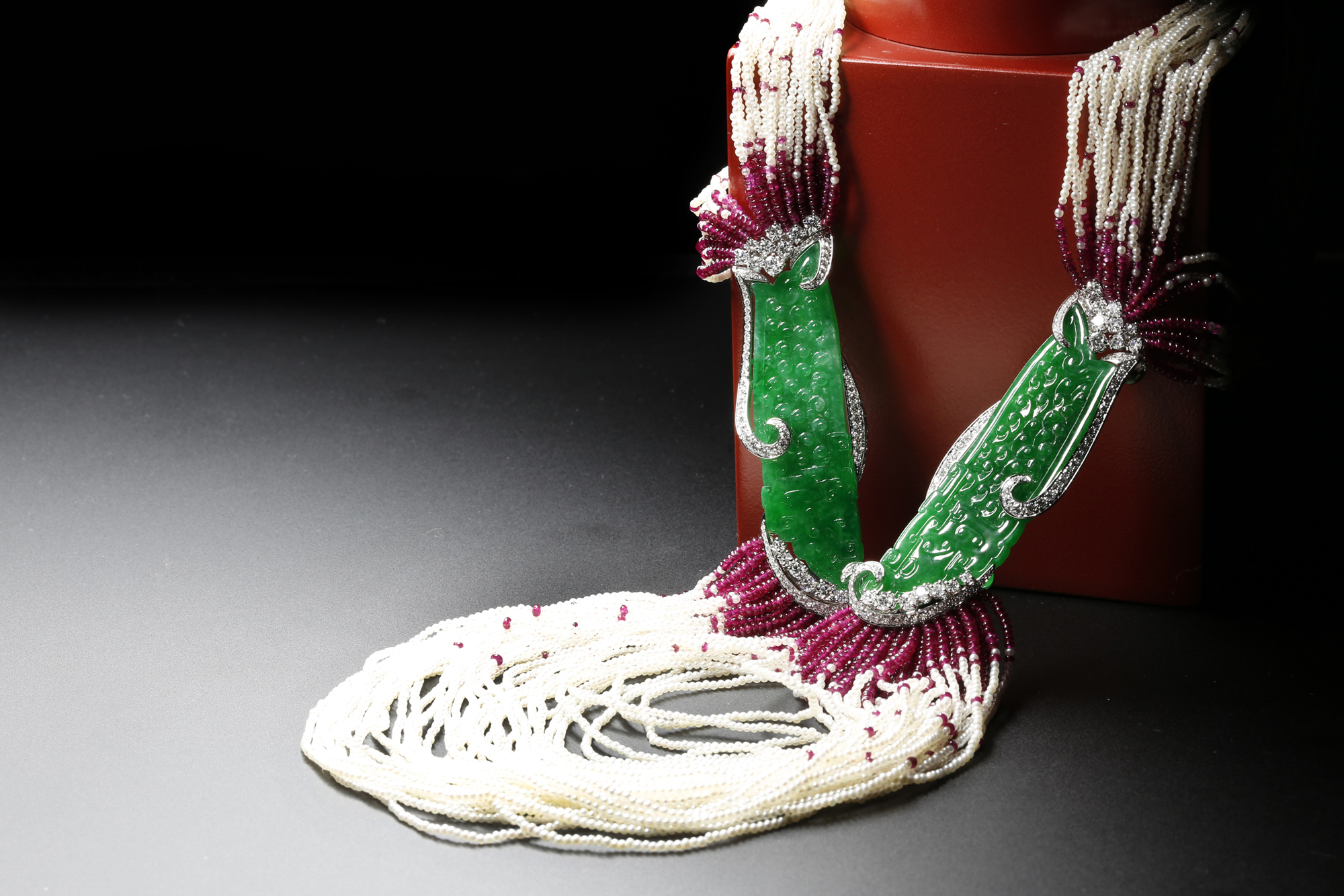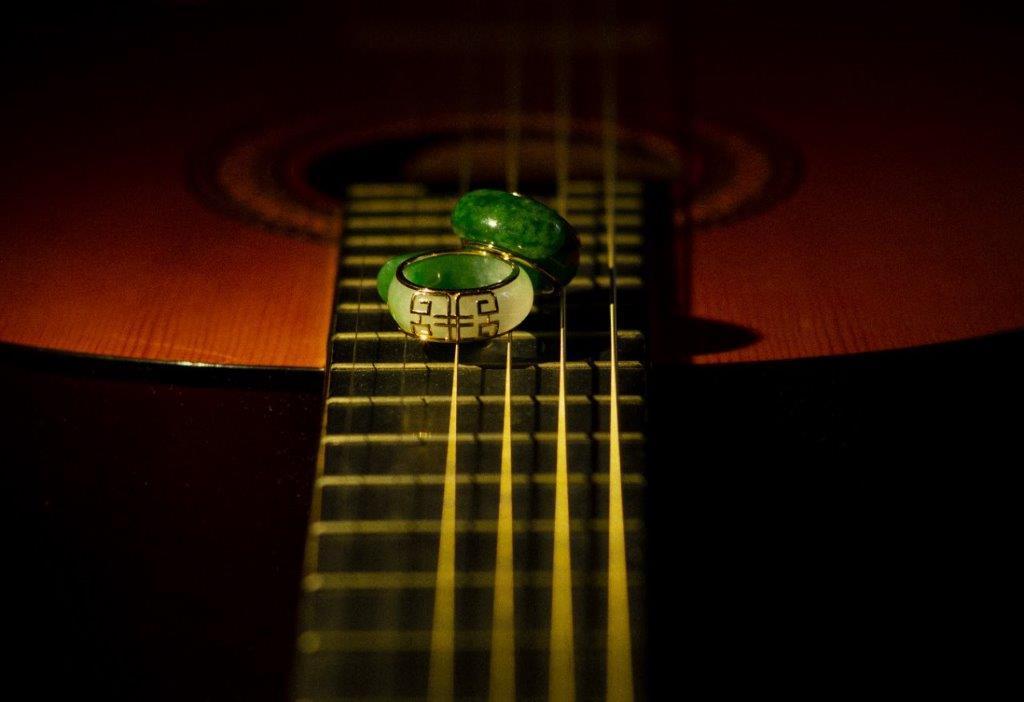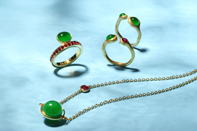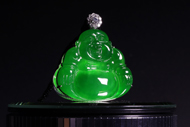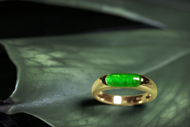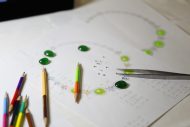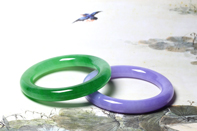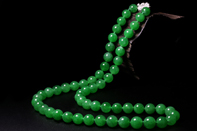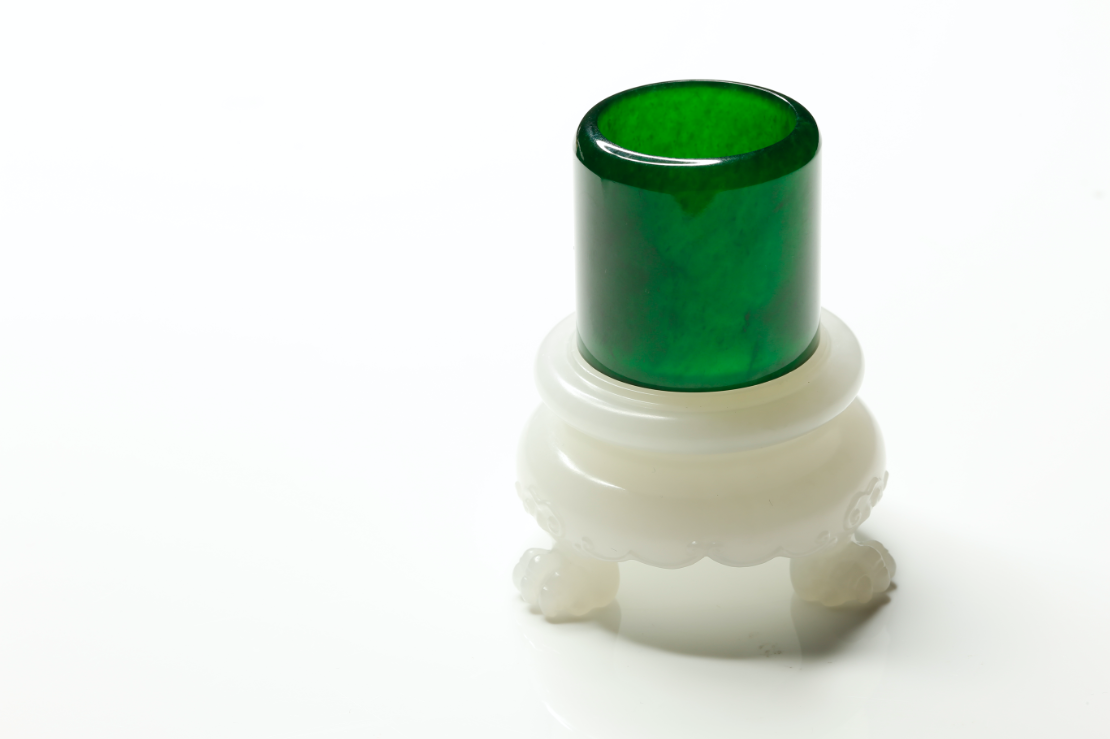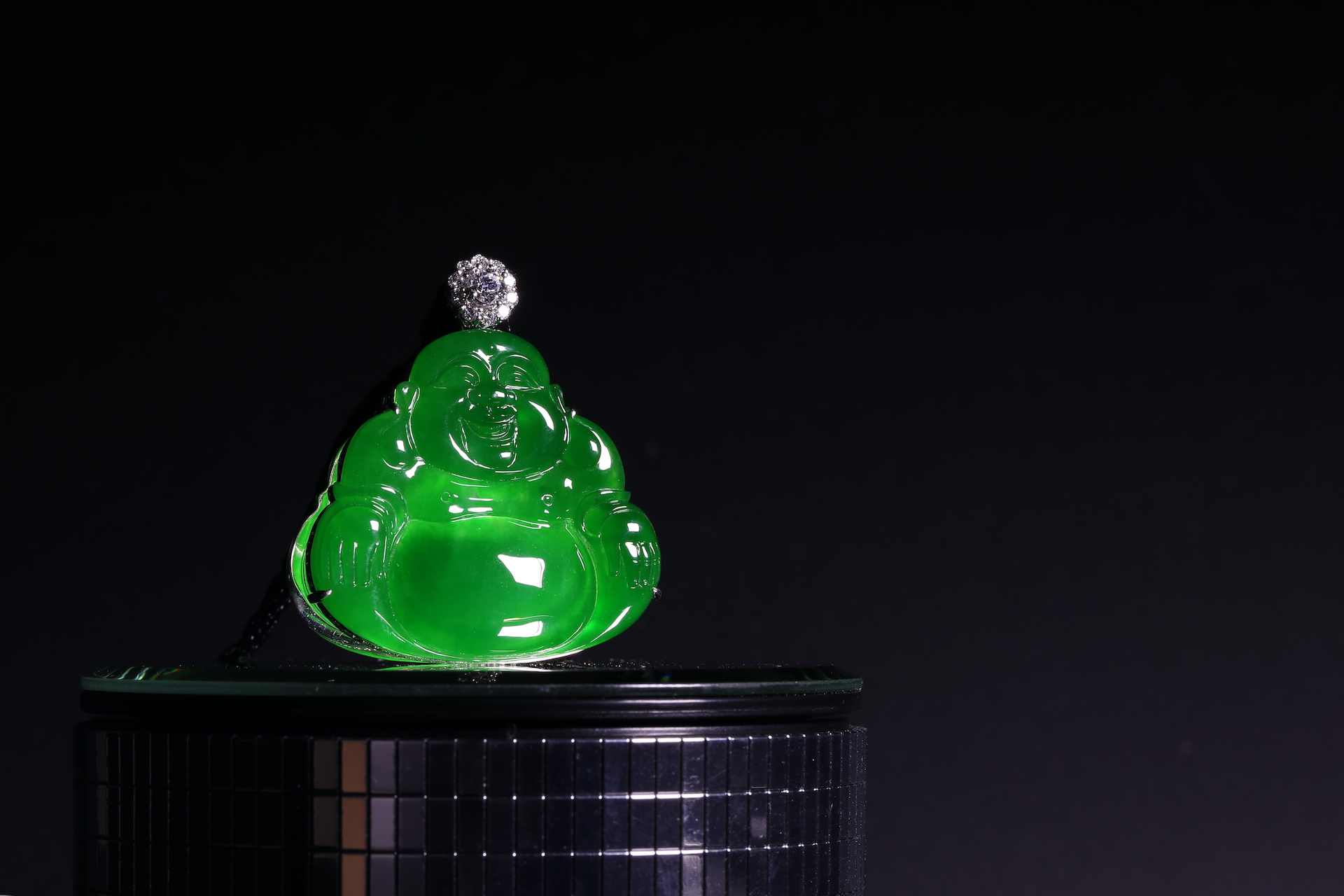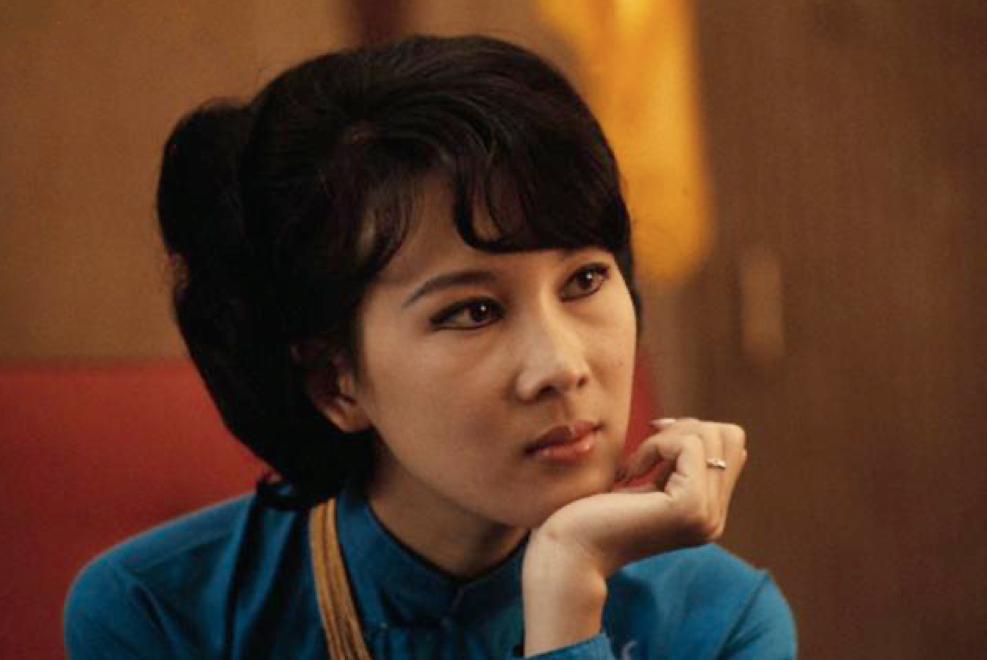Jadeite jade, deep in colour, is like a cloud full or vitality and contains a heavy sense of Eastern culture, which reflects the ancient Chinese obsession for spirituality. Its deep cultural roots have accumulated over centuries, and have inspired Chinese people to develop a special interest and attraction to its complexion.
Jadeite has always been one of the most prized jade stones of the Chinese, a gift from nature given to mankind as a symbol of vitality and life. Chinese people have always admired the elegance of jadeite, whether it is a high-ranking official or an intelligent scholar. Wearing jadeite doesn’t only make people look more elegant, it transcends to a deeper representation of rank and status. But in fact, more people like it for its cultural connotation. China’s jade culture is profound and boundless. The appreciation, the love and the collection of jade are all traditional virtues of the Chinese. Traditionally, they uphold the five standards of jade as well: “Wisdom, munificence, righteousness, faith and manners”, while wearing a piece of jadeite, one must always remind him/herself to standardise one’s behaviour with the five virtues because every single individual piece of jadeite is filled with auspicious meaning. Jadeite carving has always emphasised the phrase “Jade has to be worked, the work done must be done with meaning and the meaning must be auspicious.” Whether it is a character, a flower, a bird or a beast that is carved onto the jadeite, every piece of jadeite contains the effort and the sincerity of the jade carver.
From ancient times, jadeite prices have only risen without falling due to the popularity. But the supply of raw materials is slowly dwindling. The exhaustion of mines, the difficulty of mining and the cost of mining are all increasing year-by-year. To find the best jadeite in the market currently is a difficult feat, so it is important to cherish jadeite in the same manner as a quality investment.
The Jade “Trend Icons” in the Ancient Times
1. “The Jade Fanatic” – Qianlong Emperor, Qing Dynasty
Qianlong Emperor (1711-1799) is generally recognized as the creator or influencer of Chinese jadeite history. During the Qianlong period, the extraction and use of Hetian jade in Xinjiang Province were unprecedented, and the quality, craftsmanship as well as level of artistry had reached historic heights.
China has a jade heritage spanning over 8,000 years and Hetian jade has been the most popular jade for a long time. When jadeite was first worn in the Qing Dynasty, it immediately attracted much attention and gained the title of “The King of Jade”. In just a few hundred years, it stole the spotlight from Hetian jade in the eyes of the people.
Jadeite began to grow in popularity near the middle of the Qing Dynasty. As Qianlong Emperor led troops into Myanmar, the Myanmar king surrendered to the Qing Dynasty and was forced to become a colony of China. Since then, a large amount of Myanmar jadeite has been exported to China, which is also verified by historical documents and proven by unearthed cultural antiques. There were multiple types of jadeite worn in the Qing Dynasty. One of the most representative items was the men’s jadeite thumb ring. According to some researchers, in the seventeenth year of Qianlong in Qing Dynasty, the emperor was immediately drawn to attention by the moist texture and exquisite craftsmanship of a thumb ring, so he wrote a poem titled “詠玉韘” (Yǒng yù shè). This poem not only explained the source and purpose of the thumb ring clearly, but also cited the classics and explained the symbolic meaning. On this basis, he combined the Confucian relationship between jade and benevolence, righteousness, manners, faith and morality to personify or bestow the jadeite ring with humanlike qualities. This brought the entire theme of the poem to be professed with romanticism. This poem was also Qianlong’s first poem about jadeite thumb rings. There were as many as 50 such poems similar to this one composed by the emperor. At the time, if you worked at the palace, the best gift you could have gotten was a set of jadeite thumb rings. Since then, jadeite has become a trending item to wear within the Imperial palace as well as high society and was known as a symbol of nobility and rank.
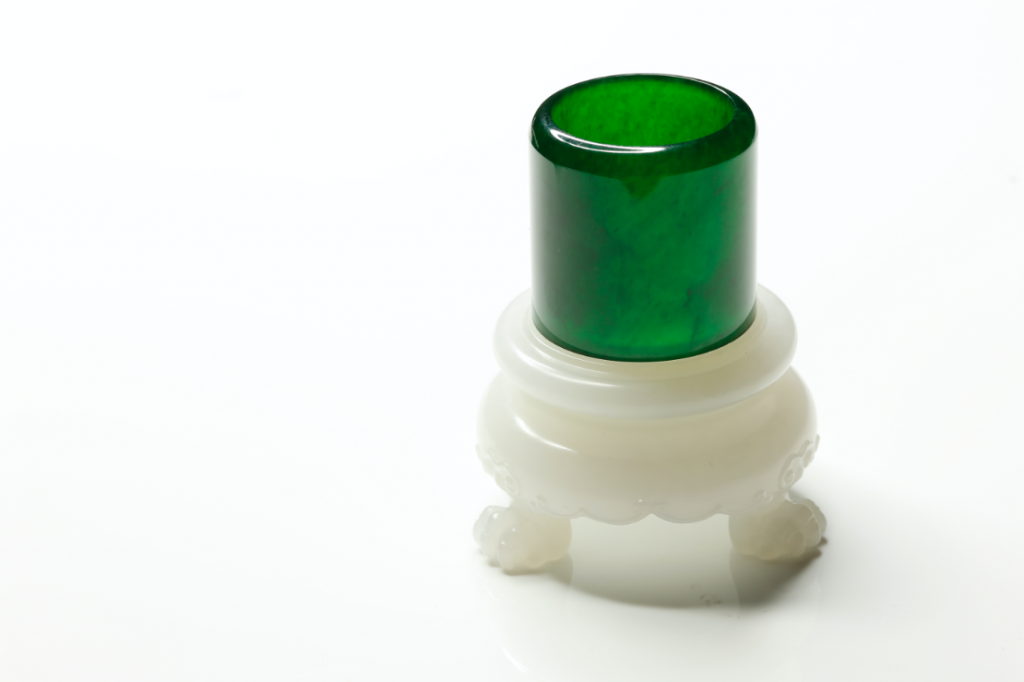
2. “The Godmother of Jadeite” – Empress Dowager Cixi, Qing Dynasty.
Empress Dowager Cixi (1835-1908) was well known for her love of jadeite. Most of her life, Cixi had a distinctive personality and loved extravagant items. She later became obsessed with jadeite, and always wore a piece of this elegant green jewellery – a necessity for her to have in her wardrobe.
Cixi’s favourite princess Der Ling (1885-1944) also recorded in her book “Imperial Incense” of how the ministers paid tribute to Cixi in every possible way by buying jadeite for her, hoping to be promoted. From there, jadeite jewellery began its unprecedented growth in popularity and a large number of rough jadeite stones entered China through Myanmar. Driven by this, locals also began to pay attention to this emerging stone. Prices of jadeite would continue to rise.
According to the eunuch Li Lianying (1848-1911) in his journal and tomb excavation records, various types of funerary items for Empress Cixi included pearl bed sheets with a thickness of seven inches, two jadeite watermelon carvings, two jadeite cabbage carvings, a jadeite lotus leaves carvings, four jadeite melons, a three-inch long jadeite pestle and her most famous pair of jadeite bangles. It is said that the bangles were a gift from Xianfeng Emperor (1831-1861) when she became his concubine. She never took them off in her whole life and kept them on to commemorate the late emperor. The bangles continued on with her in life and are still accompanying her after her death in the Eastern Qing Tombs.
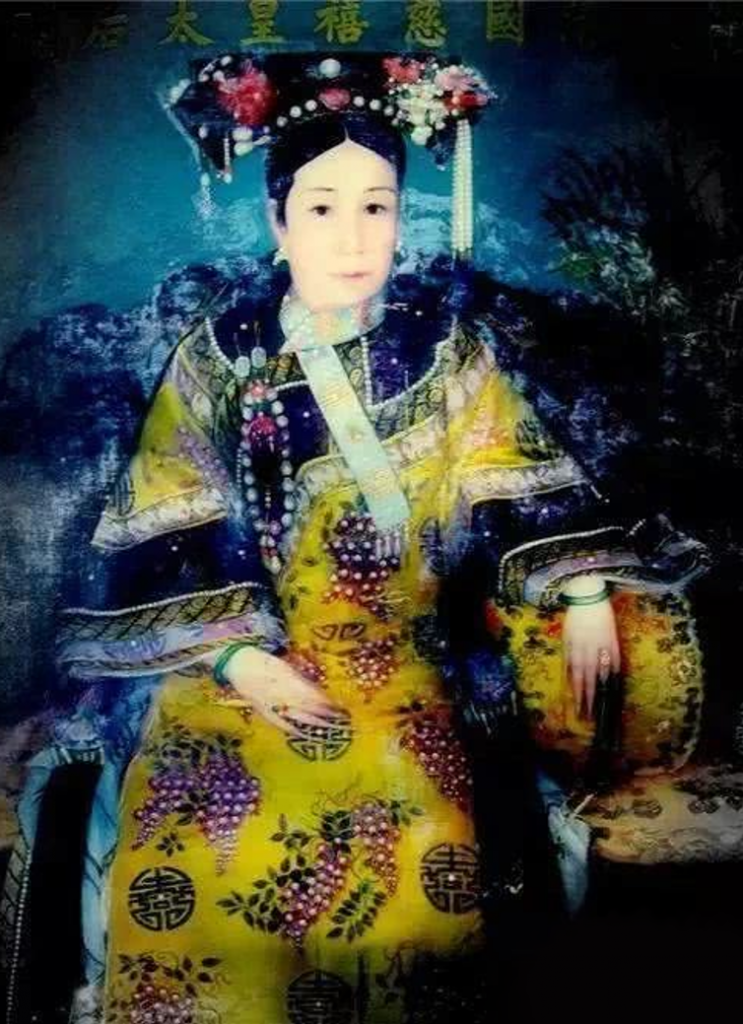
Living a life of luxury, jadeite was her favourite material jewellery and ornaments. From drinking cups, bowls, dishes to interior furnishings, all were carved from top quality jadeites. According to historical accounts, Cixi filled her Changchun Palace with all kinds of jadeite items where she lived. When drinking tea, her teapot would be made of jadeite and when eating, she would use jadeite chopsticks. In her outfit, she would have a jadeite hairpiece on her head, a pair of jadeite earrings, a jadeite ring and a jadeite bangle on her wrist. The idea being that she could play with her jadeites whenever she felt like doing so.
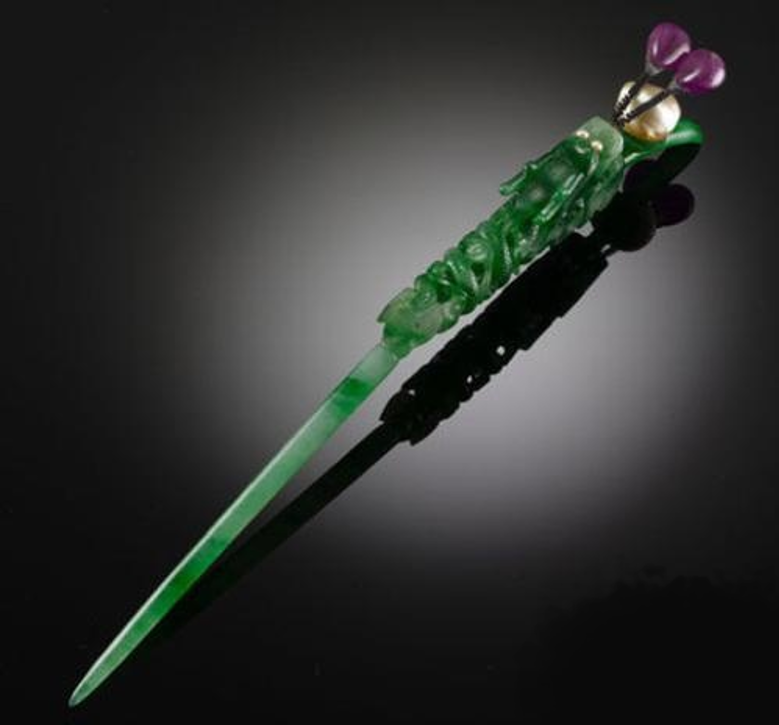
At the 2008 Christie’s auction in Hong Kong, a jadeite hairpin shaped into the head of a dragon used that was used by Cixi was auctioned. It was carved with a dragon on top with decorations of pearls and rubies, symbolising power and wealth. The hairpin was sold for HKD 3.1 million. All the jadeites of Cixi have become national treasures to people around the world. Counting through the most famous jadeites from the Forbidden City, one that must be mentioned is the Jadeite Cabbage Ornament which is now being exhibited at the National Palace Museum in Taipei and is virtually an exact copy of a real cabbage, as its textures look just like a cabbage but it is carved from jadeite. It consists of a white jadeite body for the vegetable with crisp green leaves and two insects perched on the leaves. They are tussocks and locusts that represent fertility – having many children and grandchildren. This work was originally from the Yonghe Palace in the Forbidden City. It was the palace of Guangxu Emperor’s concubine Jin Fei. Therefore, many thought it was the dowry for Jin Fei. The white cabbage has a symbolic meaning of innocence which represents the purity in Jin Fei’s character. Locusts are actually known to be fertile insects, usually used as a gift to bless the Imperial children.
